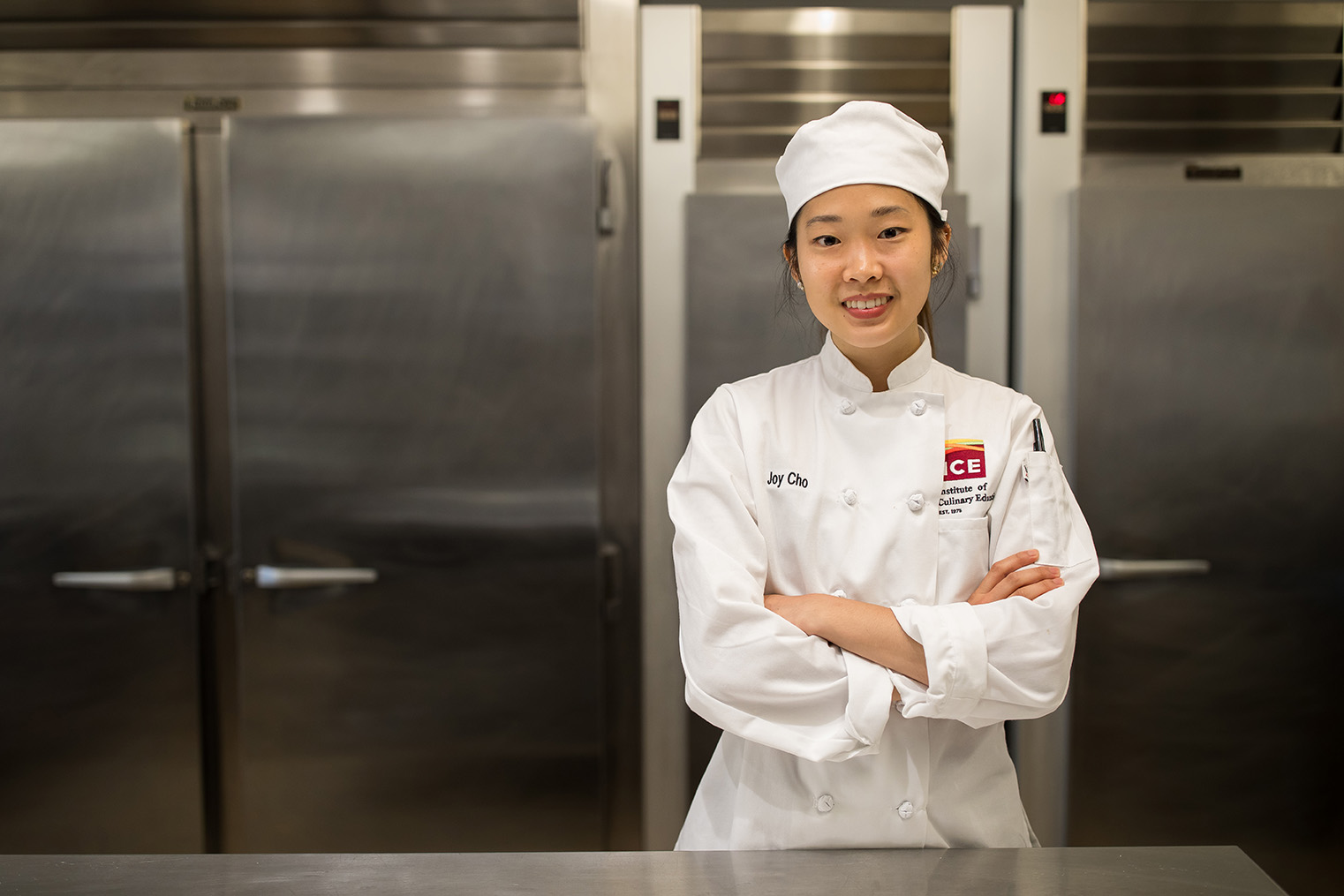
Second Time’s the Charm: Reflecting on My First ICE Practical
Pastry & Baking Arts student Joy Cho continues her career change litmus test at ICE's New York campus.
As my classmates and I approached the end of Module 1, our end-of-course written exam and practical loomed over us. Because we had taken a quiz midway through the module, I wasn’t too worried about the written portion, but the practical, in which we had to individually prepare chocolate soufflé and crème anglaise for our chef-instructor to evaluate, was a different story.
What would it look like for 16 nervous pastry students to run around one kitchen frantically making our assigned items? What if luck wasn’t on my side on test day and the end result was less than satisfactory, even though I had practiced the technique in previous classes? How harshly would we be graded? Scenes from Food Network’s “Chopped” came to mind.
Thankfully, our chef-instructor addressed many of these questions and logistical concerns the week before, which (kind of) helped ease the worries and uncertainty. We would be making a scaled down version of the recipes, presenting only one soufflé of our choice to the chef with the opportunity to redo the recipe (though points would be deducted) if we made an error. Perhaps most relieving was learning that we would be drawing our individual oven times out of a hat to give our baked goods the optimal conditions for baking sans interruption. And then of course, we would present the items to the chef after completion and be graded according to a rubric in our course book.

The weekend leading up to the exam, I reviewed the content for the written exam and looked over the recipes for the practical to refamiliarize myself with the process and instructions. When test day arrived, my classmates and I were a bit jittery but eager to get it over with – we’d had enough soufflés! After taking the written portion of the exam, we drew slips from a hat indicating which item we would make first and our oven start times. Fingers crossed, I opened my slip and was relieved to be making soufflé, the more time-intensive dessert, first.
At chef’s signal, we all got to work, using our own mixers and induction units, scaling out ingredients, repeating “behind” as we moved around the room swiftly and wiping down our work stations constantly (cleanliness was part of our overall score). Contrary to the cutthroat and pin-drop silent atmosphere I expected, the practical had an unexpected environment of collaboration. Not that we were working together – we weren’t – but it felt that we were working toward a common goal together. We ended up chatting as we prepared our items, and I was once again reminded of how different pastry school is from “traditional” school. I was determined to finish the preparations well, but I didn’t feel like I was competing with my classmates or had to rush.
As I made the soufflé batter, folded it into the whipped egg whites and sugar, and piped the completed mixture into porcelain ramekins, I found that I was — dare I say it? — enjoying myself. Even if things didn’t turn out perfectly, at the end of the day, I had learned the process of making soufflé, a dessert I had never made before.
I watched the clock carefully and pulled out my tray 15 minutes later to a pleasant surprise. The chocolate soufflés had a high, beautiful rise and when I tested the middle with a spoon, it was custardy and soft, cooked just through as it was meant to be.
Perhaps I was coming off the high of receiving (unexpectedly) good marks on my soufflé, because when I moved on to the crème anglaise, I was quickly brought back down to earth. Though I was careful to use low heat, I still cooked the eggs in the pot instead of bringing the crème anglaise to a steady nappe consistency. It was a bit demoralizing to throw out the entire egg mixture and start over, but such is life – and I didn’t want to forfeit all my points. More nervous than the first time, I scaled out my ingredients once again and put the pot over the heat. I followed chef’s strong “suggestion” to use my rubber spatula instead of a whisk (rookie mistake, I know) to constantly stir the mixture. My eyeballs were focused on the pot and even when I thought it was too early, I tested the consistency by swiping my finger across the spatula. I was glad I tested it at that point because it held its shape. A few minutes more and it would have overcooked again.
After straining the crème through a chinois and waiting for it to chill in a pan of ice water, the crème anglaise was cold enough to serve to the chef. His response? “Okay, good.” I breathed a big sigh of relief; that was more than enough for me.
Even during the practical, when we were supposedly demonstrating the skills we had developed throughout the module, I was obviously still learning. I messed up, but I had the chance to try again – and nailing it on the second try felt so much more rewarding, like I was learning in real time. As I wrote about in my last post, baking is a predictive art, but mistakes give way to better products the next time around. The process makes you more meticulous, curious, detail-oriented and determined.
I don’t want to see, eat or make another soufflé for a while, but I can confidently say that I can make one for anyone who comes asking (please don’t). With my first practical and module in the books, I’m excited for all that’s ahead. And don’t worry, chef, I won’t be overcooking egg mixtures anytime soon.
Test your dessert skills in ICE's Pastry & Baking Arts program.


Add new comment